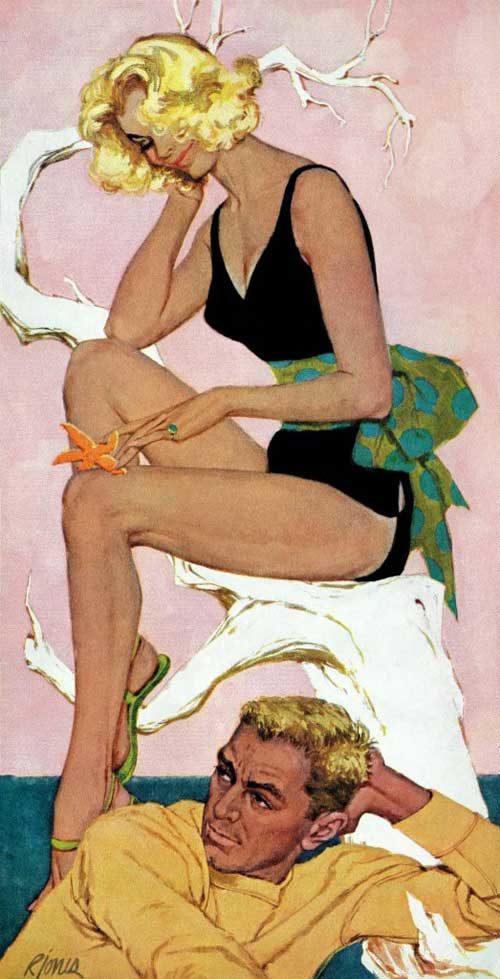The Saturday Evening Post Swimsuit Issue
Other magazines are hitting the stands with their annual swimsuit issue, so we thought we’d offer our own take on it with these bathing costumes dating back to 1910.

Henry Hutt
July 16, 1904
The model for this cover illustration was likely Edna Hutt, Henry’s wife and his favorite model, whom he considered the most beautiful woman in the world. Unfortunately, their union was an unhappy one, with accusations of abuse on both sides, including “use of ‘strong liquors,’ intimacy with other women, and cruelty.”

J.C. Leyendecker
August 9, 1924
Artist J.C. Leyendecker was well known for his illustrations of strapping, strong-jawed men, starting with the Arrow Collar Man and continuing throughout his long relationship with The Saturday Evening Post, where he illustrated more covers than any other artist, including Norman Rockwell. The model for this illustration appears to be Leyendecker’s partner, Charles Beach.

John LaGatta
July 8, 1933
John LaGatta’s illustrations depicting beautiful, sultry women were considered to be some of the most desirable artworks of the 1920s, ’30s, and ’40s. His style was a favorite of advertisers, including Campbell’s, Ivory Soap, Kellogg’s, Johnson and Johnson, and—not surprisingly—Laros Lingerie and Spaulding Swimwear.

Alex Ross
August 28, 1943
This is one of six covers that Alex Ross painted for The Saturday Evening Post. All of his covers featured beautiful women, but this beach scene is the only one that doesn’t focus on a single person. Anyone who has spent time at the beach knows that a successfully completed game of cards is highly unlikely (unless the cards are made of lead).

February 7, 1953
Joe De Mers
De Mers illustrated this short story by Steve McNeil, which posed the question, “He’d quit his job to escape the pressure and confusion of city life. Should he go back now, to please a girl?” From the look on his face, you already know what the answer is.

Wesley Snyder
June 4, 1955
Snyder illustrated this short story by M.G. Chute called “The Trouble with Love,” where we learn than “No man liked a sloppy, forgetful date who came without a bathing cap or didn’t have enough bobby pins along.”

Robert Jones
April 18, 1959
“Jimmy braced himself for the shock. She was wearing a chartreuse-and-black swimming suit. She was sleek and gently tanned and showed more curves than Warren Spahn. She put on her bathing cap and looked at Jimmy enigmatically.…Clinically, he had to admit that Jill Foley, in a bathing suit, was as tasty as ice-cold watermelon.”

George Hughes
June 11, 1960
Wolfgang Amadeus Mozart, whose likeness is sitting on our young virtuoso’s volume of finger exercises, was playing minuets on the family harpsichord at age four— but could he have done so if he had been obliged to play with flippers on both feet and a swimming pool staring him in the face? We wonder. The model used by artist George Hughes is the same youngster who appeared on our January 9, 1960, cover. His mother was standing over him on that occasion, letting him know that he had stalled long enough and that he was not to go outside until he had written a Christmas thank-you note to Uncle Vic.

Dick Sargent
June 17, 1961
Most of us have seen swimmers of this ilk before. He was the kid around the corner who spent his vacation periods counting the days until he could return to school. He was the character in your platoon who used to volunteer for guard duty. Dick Sargent’s likeness is a realistic one. See that gap between the upper front teeth? Comes from gnawing on tree trunks. You can spot an eager beaver every time.